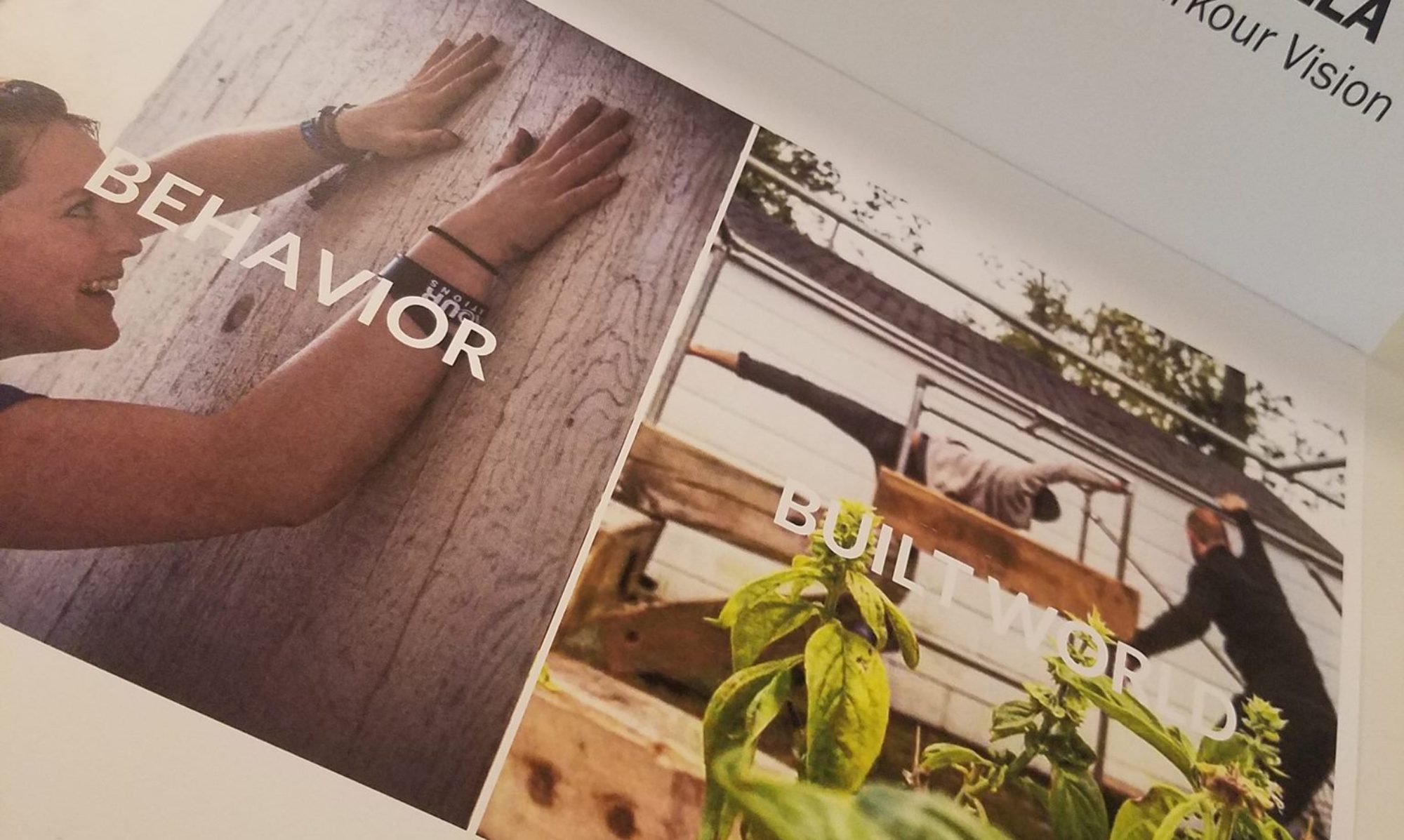“I think kids know what we’re talking about here. I think they experience shared transcendence a lot more often than we adults do – or let on to. We adults make it too hard on ourselves. We think have to win. And we forget that it’s not about winning at all after all – it’s really actually about playing well together. We forget that we are, in fact, the ones making the rules here. We forget that together, just us players, we make it even more fun.” – Bernard DeKoven
“These moments of coliberation, of shared transcendence, like a moment in a well-played game or well-acted play, like moments of harmony, love, resonance with each other – these are the moments we use to measure a well-lived life. And, for those of us who willing to play, these moments are ours.
“Coliberation – A shared transcendence of personal limitations, of our understanding of our own capabilities; a sudden, momentary transformation of our awareness of the connections between ourselves, each other, and the world we find each other in.
A shared transcendence: Something we experience in certain moments of making love, of playing with children and animals, standing in a storm together, floating in the ocean together, listening to and making music together, watching a movie together; walking in the woods or on a mountain, eating a meal, reading a book, playing a game together….
of personal limitations, of our understanding of our own capabilities: An unsustainable union where distinctions between self and community, mind and body – between whatever separates us from each other, the environment in which we discover each other – are set aside.
...a sudden, momentary transformation of our awareness of the connections between ourselves, each other, and the world we find each other in: Sudden, momentary and unsustainable because we must ultimately return to ourselves, to “minding the store.”
Sudden, momentary, unsustainable, spontaneous, undefining, transforming.
We return changed, not the same person we were – our understanding of who and what we can become, our very selves, our relationships – redefined. “
Read more about CoLiberation from Bernard DeKoven
Adults, Playgrounds, and The City: Where can we play?

I think we all agree when it comes to the importance of play and movement, especially for children. However, it frequently seems that children are the only ones allowed to indulge, and that as a society we not only have forgotten its value to teens, adults, and seniors but resist it. We verbally dismiss and label it as unproductive, self-indulgent, and immature, tell others to ‘quit playing around and get back to work, to ‘grow up’, and communicate a story that play is inappropriate.
Yet for those of us who dare to play, we are rewarded with some incredible benefits. Beyond the obvious increase in physical fitness & health, you also will find that stress levels drop, our learning and memory is more complete, social interactions become easier, and our ability grows to see opportunities in places we would otherwise have overlooked.
Play contributes deeply to our development as individuals, regardless of what age.
While we could deeply examine ways our resistance to play manifest in societal behaviors, I’d like to just scrape the surface of the story being told by the built world.
New York City alone is home to hundreds of children’s playgrounds–adventure and imagination playgrounds, modern designs, interactive sculptures, nature inspired, wood constructions, loose parts, prefab structures, and more.
The city seems to be devoted to designing, building, and renovating places to play… for children. In every city there are hundreds of playgrounds and public spaces, but how many are open to adult and teen play?
In Central Park alone there are 21 designated playgrounds. Of those 21, a grand total of 0 are designed for teenagers or adults, and most go a step further to display signage barring use. (There is ‘fitness equipment’ available for use, but we’ll get into that in a second.)
Teens and adults could try to creatively re-purpose these youth playgrounds for their own purpose and play, but at their own risk–social and civil. Considered a nuisance to parents-they’ll be met with dirty looks and an of concerns for the safety of the children. Considered a danger by the city, they will be ushered out by rangers and possibly even ticketed. Signs are posted, fences are built. Boundaries pop up around play.
The built world is literally telling us that play is not for the rest of us.

Of course, we are living today in what could be considered the renaissance of Play. And the City has taken notice of the importance of getting up and out on your feet (2). There are a growing number of campaigns, programs, and facilities to assist adults in cultivating an active, healthy lifestyle.
However, a gym is not the same thing as a public playground, and does not offer the same set of complex benefits. Those four walls keep a lot of people and experiences out of the equation, and unable to participate.
Outdoor Gym ≠ Playground

In 2012 NYC opened its first official ‘adult playground’ and has plans to build two dozen more by the end of 2014 (3). This is a great start.
However, calling these spaces playgrounds is a gross exaggeration. Playgrounds are spaces that require creativity and imagination, storytelling and social negotiation, problem solving and exploration – and these ‘adult playgrounds’ lack all of that… because they are just outdoor gyms. Gyms come complete with rules and regulations, signs and directions, notions of ‘right’ and ‘wrong’, expectations around achievement and behaviors. There is little creative thinking required and social interaction is avoidable.
While there is the benefit of improving economic access to a socially permissive space for physical activity (and that it smells significantly better than a box gym), so much is still lost and missing. Not to mention that the story being told about movement for adults is one of prescription and conformity.
(I will note that there has been some effort made to provide spaces for teens, but mostly in the realm of skateboarding-contingent upon the signature of a waiver and specific equipment requirements. There also was a recent project to build a playground for teens in Hudson Yards, but no others that I could find slated for construction. )
All spaces considered, there is no deny the unacceptable and near complete lack of opportunity for teenagers and adults to engage in free, unstructured, social, creative movement play.
What Next?
Now, I know here many will say that NYC has so much open park space. But in reality, in a Park your options are to walk on this path or that one, or to sit on a bench, in the shade or the sun, or to buy a vendor hot dog & people watch. There are tons of bike paths if you’re able to afford a bike, or you could throw a ball in the field, if you’re allowed on the grass, and only as long as you don’t disturb your neighbors. Any deviation from ‘normWhat next?al’ behavior will still be met with the social kickback we talked about above.
We need physical spaces complete with policy and permissions that permit play.
Thus with the lack of options it should be no surprise to hear that in NYC more than 1/2 the adult population is either overweight or obese(4)(5), especially when compounded with the fact that many of the opportunities that are available to get moving are too expensive, difficult, competitive, or, to put it plainly, not a whole lot of fun.
A sustainable, healthy lifestyle needs to be more than gym workouts, expensive specialty classes, and competitive team sports. We don’t need more gyms and classes in our city; we need more playful infrastructure and community spaces to support play across all ages. We need spaces that are complex, inter-generational, and flexible, that allow adults & teenagers to develop and explore their own open-ended challenges. Colorful. Social. Open to chaos, exploration, creation. A place that is safe, welcoming, accessible, and fun.
We need to stop looking at play as a distraction or diversion from reality, but rather as an integral element of our continual, healthful development. We need to design the places we live to support living a life in play.
CITATIONS
1 “§1-05 Regulated Uses.”New York Parks & Recreation. NYCDPR. Web. 20 Mar 2014. <http://www.nycgovparks.org/rules/section-1-05>.
2 “Priority Area: Physical Activity and Nutrition.”New York State Department of Health. Web. 20 Mar 2014. https://www.health.ny.gov/prevention/prevention_agenda/physical_activity_and_nutrition/
3 “New York Introduces Its First Adult Playground.”New York Times. Winnie Hu. Web. 20 Mar 2014. http://www.nytimes.com/2012/07/01/nyregion/new-york-introduces-its-first-adult-playground.html?pagewanted=all
4 “Obesity.”New York City Department of Health. Web. 20 Mar 2014. http://www.nyc.gov/html/doh/html/living/obesity.shtml
5 “BRFSS Brief: Overweight and Obesity, NYS Adults 2011.”New York State Department of Health. Web. 20 Mar 2014.http://www.health.ny.gov/statistics/brfss/reports/docs/1304_overweight_and_obesity.pdf
You Have Time. You Just Lack Motivation
I constantly hear clients complain about the lack of time they have in a day to consistently exercise and stay healthy.
I want to be sympathetic to this sentiment but the reality is that there are 168 hours in a week. If you work a 40-hour week (9-5) and sleep a full eight hours each night, you are still left with 72 hours. 72 hours. Lets even subtract another 21 hours so that you can cook yourself healthy dinners and get some family time in. And subtract another 10 for commuting (A nod to you New York, with almost an hour long commute!)(1). Even after all that, you still have over 25 hours.
Public health guidelines only recommend about 4 hours a week of exercise in order to stay healthy (which I disagree with but…)
You don’t have time, you say?
You’re right, what you don’t have time for is excuses.
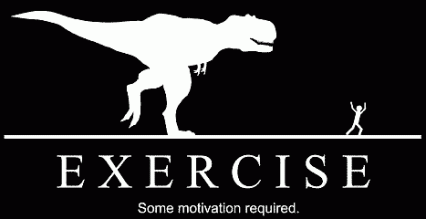
The Epidemic of American Life
Americans, especially New Yorkers, are always on the go. We race around every day to make more money, to improve our status, to catch up on our work, trying desperately to get ahead. We burn the candle on both ends, juggling family with hobbies, as we work to carve out our own little version of the american dream.
And we suffer from an epidemic of obesity and frailty. We overindulge in fast foods, liquor, and drugs. We sleep too much or we sleep too little. We are indoors more than 90% of the day (2), behind computers and televisions, playing games, posting on facebook, and living digitally.
We feel like we don’t have enough time to exercise because we are too overwhelmed and exhausted by the mixture of financial burdens, family obligations, social media overload, and work. We fail to prioritize our health alongside all the other elements of our life not because there is not time, but because we can’t be bothered.
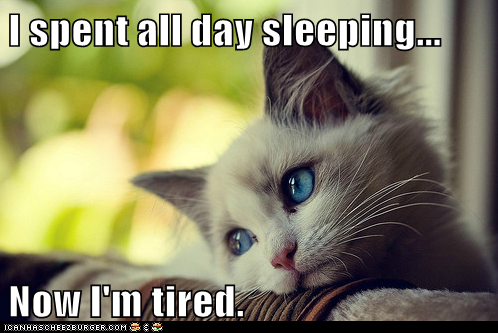
As time passes, your bones weaken and muscles soften, and though you might be surrounded by nice things now, you also earned yourself a body that ultimately will fail you.
Mindset Shift: From Work to Play
We need to stop viewing exercise as work. If you hate running, then don’t go spending hours on the treadmill. If you hate team sports, then don’t go join the local baseball league. Movement comes in many forms–it is just a matter of identifying the one that speaks to you and brings you joy.
If you don’t enjoy what you are doing, you will make sure there is never any time.
We need to learn to take delight in movement, to seek out fulfilling forms of play, and to indulge ourselves. It is not about getting healthy and fit, but being healthy and fit–enjoying movement for life, as an integral part of that life. We need to find forms of play that we ultimately will give the same weight of importance as our work, family, and other pursuits.
For play is work of the most serious and important kind. Physical play is where we explore who we are, where we encounter our insecurities and face our limitations, where we learn to cope with insecurity and begin to define and exceed our capacities. Play allows us to be healthy and fit without having to feel like we are working on being healthy and fit.
Playing, and living healthy, demonstrates respect for ourselves.
Do This
So stop making excuses. You do have enough time!
Go find your form of play and start respecting your body and your self.

- Journal: Sit down and write down your daily routine. You can do it on a napkin even. What is blocking you from finding time to move and play each day? Re-write your ideal routine, and revisit it once a year at minimum, if not each season (weather really kills my routine).
- Find Your Play: Ditch the gym and find a new way to play (meetup.com anyone?), and keep trying new ways until you find something that sticks. Better yet, find a community that loves to move and play–its proven that your community impacts your lifestyle and behaviors.
- Start Small: Add some movement snacks to your day (stand on one foot while brushing your teeth, take a walk for lunch, start and finish the day with 5 minutes of stretching).
(1) Partnership for New York City. NYC Jobs Blueprint. 2013. http://www.pfnyc.org/reports/2013-blueprint-web.pdf
(2) US EPA. Buildings and their Impact on the Environment: A Statistical Summary. 2009. http://www.epa.gov/greenbuilding/pubs/gbstats.pdf
The Language of Movement
“You can discover more about a person in an hour of play than in a year of conversation.”
Language is one of the most important components of civilization. It allows us to express our thoughts, to explore our ideas, and to overcome our problems. And, even though there are thousands of languages, it is hard to find one that is truly universal, one without a huge learning curve, one that speaks across any juncture of age, place, and intelligence.
But it exists.
Movement is that universal language and is, above all, the most accessible form of communication. Each and every person can both observe and participate in the dialogue with little to no training. We can express emotion, reflect thought, and expose the complex characteristics that make us each uniquely ourselves.
And though there are many dialects of this Movement language, such as dance, gymnastics, and martial arts, the dialect that stands out, above them all, is Parkour.
Dialect of Parkour
Parkour is a unique physical discipline in that practitioners, known as Traceurs, have complete control over their practice. They choose their environments, they set their own challenges, they make their own rules. The purpose of practice is left to the individual to define. Thus you can step back and really examine–Are their rules non-negotiable or loose guidelines? Do they train in the heart of the public or in the quiet alley behind their home? Are their challenges primarily of the physical nature or the mental? Complex or simple? Inspired or out-of-the-pack?
And with these choices, Traceurs weave their amazing stories–stories of who they are, what they believe, and what they want. With every movement, they clearly reflect their values, personality, and temperament.
A Single Jump
In a single jump, for example, you can read about the characteristics and personality of the Traceur. There will be practitioners who jump with cold, calculating certainty. Their jumps speak a story of maturity, of discipline and self-knowing. Some jump with violence, revealing a story from their depths–a buried rage to give them a final push. Others jump with fear, unsure of the end result, unsure of their own selves.
Clumsy jumps, creative jumps, passive jumps, the list can go on, each one uniquely reflecting the jumper, each uniquely telling a story. Some jumps reveal hesitation and self-consciousness whereas some reveal overwhelming pride and ego, some speak to the degree of creativity and others to a meticulous planning nature.
Don’t understand? Well then, I ask–go find a jump, whether it is two curbs or two cliffs, and observe how you feel. Did you pick a jump that scares you or did you play it safe? Is your heart pounding in your chest? Is the jump a strange one–requiring you to duck when you land so as not to bump your head or relatively simple? Are you safely out of sight, so no one will see you if you fail or are you in public, hoping everyone will stop to watch? The more jumps you take, the clearer the pattern emerges.
A Half Hour of Play
So, you can only imagine then, if a single jump can say all that, what can it say in an half hour of play?
Well, look around, look at the people you choose to train with:
- What challenges do they choose for themselves?
- How do they prepare to confront them?
- Do they seek critique and collaboration or are they isolated in their practice?
- Are they first to volunteer an activity or do they follow along?
- Are they passive observers or active participants?
- How do they deal with failure? Success?
A few years back I attended a Parkour gathering in San Antonio Texas. We had 75+ practitioners, Some as young as 10 and those well in to their 50s, some with years of play under their belt and some new to the experience. And this group, flush with variety, took a trip to a wonderful wooden playground in the suburbs to train.
The group dispersed, each individual finding challenges unique to their interests or skillsets. When walking around, the personalities of each Traceur slowly came out. One group immediately sought out the largest jumps in the park–ambitious, courageous, reckless, all these personalities followed. Another group went to the fence line, carefully hopped up on to the rail, and attempted to balance without fail, reflecting different degrees of discipline and patience. And yet another group stood around watching the others move, nervous to join in, unsure of their skills, curiously observing.
And the variations go on. I watched people tremble before jumps, psych themselves up, cool themselves off. Some only worked on challenges found by others, whereas there were those who were only interested in the challenges they could set for themselves. A few played games while others designed obstacle courses. Some were arrogantly playing to the passerby public, and others were cautiously staying out of sight.
The permutations of personality present there that day were infinite.
Who Are You?
In a half hour of play one can speak volumes, reflecting varying degrees of virtue. Through a half hour, you can reflect on personal creativity, respect, efficiency, temperance, ambition, curiosity, courage, patience, perseverance, honesty, and so on. And it is this kind of conversation I value the most, for movement is the language of honesty. Your actions do not lie.
So, next time you step out and seek a challenge, next time you set a jump, ask yourself who you are.
From Obstacles to Opportunities: Why You Should Learn Parkour
We all have our own map of the city in our head. For most it remembers where our favorite places are to eat are, where our friends live, where to get coffee, where to hang out, and so on.
My map, however, remembers where the best places are in the city for an adult to play; Little dots light up across the mental landscape pinpointing locations of sturdy scaffolding and rough concrete barriers, with play-friendly public spaces, and large oak trees with branches that hang low enough for jumping on. It records every physical challenge we’ve completed and all the ones yet to be. It knows the difference between public spaces that tolerate and ignore play and those that embrace and encourage movement.
This map is a unique map of textures and temperatures and human activity, of tested and untested public and private relationships, of enjoyment, tolerance, and rejection–and it is a map that could only come to be through Parkour.
What is Parkour you ask?
What Is Parkour?
Parkour is a discipline of movement and self-improvement that teaches one how to overcome any obstacle both efficiently and creatively, using nothing more than the human body. This playful platform of movement encourages interaction between yourself, others, and your environment.
Traceurs, or individuals who practice Parkour, thus know the city like no other. We study textures, we grip, we feel how sturdy our obstacles are. As we walk through the city we are compelled to interact with it; running, jumping, climbing, crawling, swinging, and balancing. The mere act of walking around becomes an adventure, leading us to look for new challenges, new ways to improve ourselves. Can I jump from this curb to that one in a single bound? Can I slip through this scaffolding without touching the bars? Can I balance along this rail without falling once?
And it is this type of interaction with the city that there needs to be more of–this engaged awareness, this parkour mentality. It brings new life to both popular public spaces and those leftover and overlooked. Things that once slowed movement–benches, tables rails, walls–now become elements that enable . Obstacles become opportunity for growth, imagination, and play. And suddenly there is no mission impossible, there is no challenge too great.
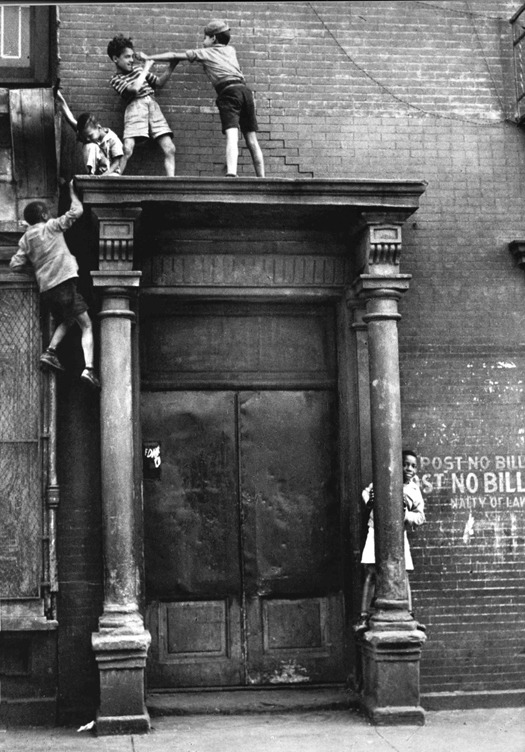
This playful view of the world, this parkour mindset and approach to life, is something we all once had. At one point, when we were at our youngest, we didn’t understand the word ‘impossible.’ We believed in ourselves, we took risks, we wrestled for hours with how to get across the playground without touching the ground (it was lava, remember?). We tested ideas and learned of our limitations. We became the ultimate problem solvers.
As we grew older, however, we lost that unwavering resolution, that uncapped potential. We scraped our knees, we broke a bone, our parents panicked at the sight of blood. We were told that some problems were too hard or impossible and that either we weren’t strong enough or smart enough or old enough. …That we never would be.
But this isn’t the truth. This is just the world trying to tell you to grow up, to color inside of the lines, to fit the mold, to play it safe.
So I want to demand an answer: Why is this considered the right thing to do! Why have we allowed safety to be emphasized to the point of instilling fear, insecurity, and inability in both children and adults? Not only does this obsession with safety decrease the number of real opportunities to create and engage with your environment, it also severely limits self-exploration of personal (physical+mental) abilities and limitations.
And if we continue to place emphasis on being overly safe we’ll end up only creating the unsafe–a world where people don’t know how to confront complicated challenges or to cope with uncertainty.
As famous playground designer Paul Friedberg explains, “[Our problem is that] We want the child to be living in a padded box. [But] A child has to have the real world, fraught with challenges to overcome.”
Return to Play
So, there needs to be a return to play. True, fulfilling, authentic play, where children and adults alike can seek out real challenges, navigate real risks, and begin to honestly understand their physical and mental capabilities. …Play through which they can really grow.
And Parkour is one of those few disciplines that can provide this holistic platform of play while acknowledging this already pervading atmosphere of fear.
Through the medium of games and challenges, Parkour encourages curiosity and experimentation, builds strength and self-confidence, and of course teaches the value of risk and the importance of facing your fears.
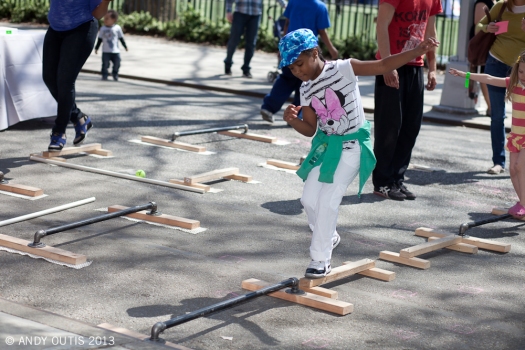
Furthermore, Parkour teaches creative problem solving. A simple game of hopscotch can be transformed in an exercise in problem-solving when squares start to appear on the sides of walls, under railings, on low ledges. In practice we learn that techniques that work in one situation may not work in another. We are forced to explore alternative solutions, other ways over/under/through the obstacles we face, to find a way that we may not even have seen or tried. And through this process, Parkour teaches us how to adapt to every situation, to think outside the box.
As to those safety concerns, through its practice Parkour ingrains safety. You learn how to run properly, to jump and land without impact, to move without hurting yourself. It teaches you not only how to assess the risks associated with any challenge you face, but how to judge it to be within or outside of your abilities.
So, forget buying expensive equipment or building one of those sterile play-structures in your backyard. Teach your children Parkour, learn it for yourself. With only a pair of shoes and their imagination, one can learn how to seek out challenges and games alone.
For Teens & Adults Too!
Especially, we would like to emphasize how crucial it is to teach children Parkour as they enter their teenage years. You see, as children get older they outgrow the playgrounds they know so well. Most of those constructed around the country are designed for children under 12 and restrict children older. Even if there aren’t any signs forbidding play, the dirty looks of adults say enough. ‘You don’t belong here, you’re too old to be playing here.’ Teenagers and adults alike are cast away from the only spaces their communities provide for play.
And, at a time so crucial for defining who they are, society shepherds teenagers and adults away from the playgrounds and into other public spaces, where play is no longer the apparent intention. Rather, these public spaces and parks offer benches to watch some tourists and enjoy a vendor hot dog, a patch of lawn for a nap or cloud gazing, windy paths that lead to no where and offer nothing but a view. (And we wonder why obesity is an issue, hm).
Now, we’re not saying that we’re against benches and ice cream and napping on a nice sunny day, but these provisions alone clearly offer very little in return in terms of human growth.
Adults and teenagers should have as much of a place to play as children. They need to play too! The same gains we make as children through play will only increase in complexity and magnitude as we age and mature. Our abilities to assess risk, to problem solve, to cope with uncertainty, can continue to increase and refine themselves ad infinitum. There is so much growth that can still be gained as we slip in to adulthood.
So Parkour provides that playground, for teens and adults alike. It provides a world that will never run out of challenges, that has no age limitations and no skill requirements. And if we teach children while they are young enough, they will never find themselves lost in a world without a playspace of their own.
Obstacles Are The Everyday
Obstacles are apart of every day life, whether it is climbing a wall, getting to work on time, or delivering making a presentation in front of a large group. The lessons we can learn through play and though parkour--to creatively approach problems, to face our fears, to love and respect the people around us and the world we are in--are lessons that can be carried out through the rest of our lives, and are lessons without completion.
So we urge you to, right now, this very day, to start pinning your map with every opportunity for play, for every chance to grow. To always look for opportunities to become better than you are, regardless of whether you are a child or adult.
